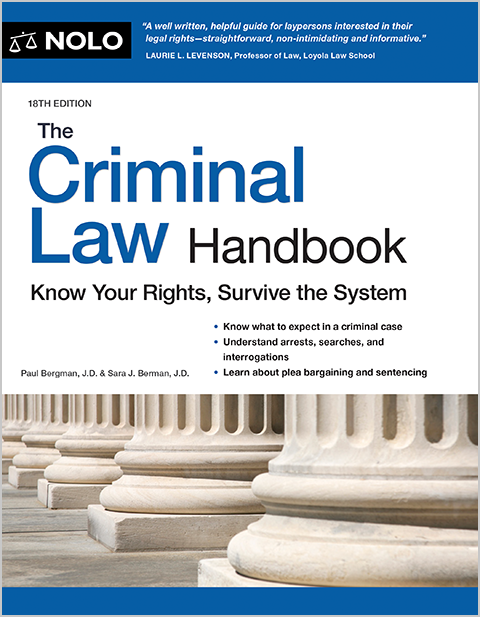Learn what medical tests show poor enough lung function that can qualify emphysema for disability benefits.
Emphysema is a chronic lung disease caused by long-term exposure to smoke or air pollution. If you have emphysema, your lungs aren't able to hold their shape or function properly because the tissue supporting them has been destroyed. When this happens, you may experience symptoms such as shortness of breath, coughing, wheezing, fatigue, and respiratory infections.
The Social Security Administration (SSA) and the Department of Veterans Affairs (VA) can consider emphysema to be disabling if your pulmonary functioning is severely limited, as demonstrated by certain breathing tests or the inability to work full-time. Knowing what medical evidence you'll need to meet the SSA and VA disability standards will go a long way towards strengthening your claim for benefits.
- When Does Emphysema Qualify for Social Security Disability?
- Veterans Benefits Based on the Emphysema VA Rating
- How Do I Show That My Emphysema Is a Disability?
- How Much Can I Get in Disability Benefits For Emphysema?
- How to Apply for SSDI, SSI, or VA Benefits
- What If My Emphysema Isn't Considered a Disability?
When Does Emphysema Qualify for Social Security Disability?
Social Security awards disability to people with a medical impairment that prevents them from earning at or above substantial gainful activity for at least 12 months. You'll also need to meet the preliminary eligibility criteria for either Social Security Disability Insurance (SSDI) or Supplemental Security Income (SSI). SSDI eligibility is available to people who've paid into the program by way of FICA or self-employment taxes for long enough. SSI is intended for people with limited financial resources, so eligibility is subject to certain income and asset restrictions.
Once Social Security has determined that you're legally allowed to receive either SSDI or SSI, you can establish medical eligibility for emphysema in one of two ways—by showing that you meet the agency's listing for chronic respiratory disorders or by having enough functional limitations to rule out all full-time work.
Getting Disability Benefits by Meeting a Listed Impairment
Listed impairments are medical conditions that the SSA considers especially severe. Each "listing" in the agency's "Blue Book" comes with a set of requirements that, if documented in your medical records, will make you automatically eligible for disability benefits. Emphysema is evaluated under listing 3.02 for chronic respiratory disorders. In order to meet this listing, you'll need to have a spirometry test to evaluate your lung function.
The spirometry test monitors the amount of air exchanged when you breathe and the rate at which you breathe. The test required for emphysema specifically measures the amount of air you can force out of your lungs in the first second of an exhalation (called FEV1). Social Security will compare your results to the charts included in the listing to determine whether you meet the listing's requirements. The chart results are based on your height, age, and gender. For instance, a 5-foot-2-inch woman over age 20 would need an FEV1 of 1.15 (liters, BTPS) or less.
Another way you can meet the listing requirement is with a DLCO (diffusing capacity of the lungs for carbon monoxide) test. DLCO tests measure how well your lungs transfer gas from the air you inhale into your bloodstream. If you have enough difficulty in gas exchange according to the listing's height and gender charts, you can qualify for benefits. Finally, if the FEV1 or DLCO tests aren't conclusive, you can provide results from an arterial blood gas (ABG) test that shows a low level of oxygen in your blood to show that you meet the listing.
Getting Disability Because Emphysema Keeps You From Working
Disability claimants with mild or moderate emphysema aren't likely to meet the requirements of listing 3.02. But Social Security will still consider you disabled if your symptoms are severe enough to prevent you from working full-time. The process by which the agency determines what you're still capable of doing at work on a regular basis is called assessing your "residual functional capacity," or RFC.
Your RFC is a set of restrictions on what you can do, physically and mentally, in a work environment. For example, if you get out of breath after walking just a few blocks, your RFC may limit you to only sit-down jobs. The more severe your emphysema symptoms are, the more restrictions you'll have in your RFC—and the less likely it will be that Social Security finds any work that you can perform.
Social Security uses your RFC by comparing your current restrictions with the duties of your past jobs to see whether you can do them today. If not, then the agency will need to determine whether any other jobs exist that you can still do despite your RFC. If you can't do your past work and there are no less demanding jobs you can do—or learn to do, given your age and skill set—you'll be awarded disability benefits in what's called a "medical-vocational allowance."
Veterans Benefits Based on the Emphysema VA Rating
Unlike with Social Security, you don't have to be totally disabled to qualify for benefits from the VA. Instead, you'll need to establish that your emphysema is service-connected, meaning it was caused by or made worse by your time on active military duty. Then, the VA will assign you a disability rating depending on how severely your lung capacity is reduced. The rating determines in large part the amount of your monthly disability compensation.
The VA rating for emphysema is found in the Schedule of Ratings—respiratory system, in the section on Diseases of the Trachea and Bronchi under diagnostic code 6603. (38 C.F.R. § 4.97.) As with the Social Security listing, the VA rating for emphysema is based on spirometry or DLCO test results. Possible assigned ratings are 10%, 30%, 60%, and 100%, based on the percent of the predicted FEV1 or DLCO score you have or the ratio of FEV1 to FVC (forced vital capacity, which is the most air you can exhale after taking a deep breath). The smaller the percentage of predicted value or FEV1/FVC ratio, the higher your VA rating will be.
How Do I Show That My Emphysema Is a Disability?
Whether you're applying for SSDI, SSI, or VA benefits, your medical records will be the foundation of your disability claim. That means you'll need to provide clinical notes from your regular doctor, pulmonologist, and any medical providers who've been treating you for emphysema. Additionally, you should have the following evidence in your record to have your best chance of getting benefits:
- results from FEV1, DLCO, ABG, or other pulmonary testing
- objective imaging such as a chest X-ray, CT scan, or MRI
- intake and discharge records from any hospitalizations, and
- medication lists showing the purpose and dosage of any prescriptions.
If you need to use supplemental oxygen or ambulatory assistance (like a cane or walker) in order to get around, your records should document the medical necessity for these aids. You can also increase the strength of your claim by asking your treating doctor to provide their medical opinion detailing the extent of your functional limitations.
How Much Can I Get in Disability Benefits For Emphysema?
Social Security doesn't award benefits based on the type of disabling condition. Instead, the amount you'll receive if you're awarded benefits will depend on whether you're eligible for Social SSDI or SSI. For 2025, the maximum you can receive in SSDI benefits is $4,018 per month—although the average amount is much lower, at $1,580. SSI benefits are tied to the federal benefit rate, which in 2025 is $967 per month minus any countable income you have in that month. For more details, check out our articles on how much you can get in SSDI and how much you can get in SSI.
VA disability compensation is calculated using a combination of your disability percentage rating and your living situation. For example, in 2025, an individual veteran with a 30% rating can receive $537.42 every month while an individual veteran with a 60% rating can receive $1,395.93. Veterans with the same disability rating (30% and 60%) but who are married with one dependent child will receive higher payments, at $648.42 and $1,617.93 respectively. You can estimate your benefits by reviewing the current VA disability compensation tables.
How to Apply for SSDI, SSI, or VA Benefits
Submitting your application for SSDI or SSI benefits is fairly straightforward. You'll start by completing Form SSA-16, which you can complete electronically, over the phone, or in person. (You can learn more in our article about filing a disability claim with Social Security.) Below you can find the contact information for your preferred method of filing.
- Apply online at ssa.gov. Filing online has many benefits, such as giving you the option to save your application and return to it later. You'll also receive a confirmation number where you can track your application.
- Call Social Security's national number at 800-772-1213 from 8:00 a.m. to 7:00 p.m., Monday through Friday, to speak with a representative. If you're deaf or hard of hearing, you can use the TTY number at 800-325-0778.
- File in person at your local Social Security field office. You can use the locator toolhere to find the office closest to you.
You can apply for VA benefits in a similar manner. You'll need to complete Form 21-526EZ, Application for Disability Compensation and Related Compensation Benefits, which you can do in a few ways:
- Apply online using the electronic version of Form 21-526.
- Fax Form 21-526EZ to 844-531-7818 (from inside the United States) or 248-524-4260 (from outside the U.S.).
- Bring your application to your local VA office.
- Mail the form to the Department of Veterans Affairs, Claims Intake Center, PO Box 4444, Janesville, WI 53547-4444.
Veterans can receive both VA and Social Security benefits, although being found disabled by one agency doesn't guarantee that you'll get disability from the other due to the different criteria for each. But if you have medical records strong enough for the VA to give you a 100% disability rating, for example, it's likely that the SSA will come to a similar conclusion.
What If My Emphysema Isn't Considered a Disability?
If you aren't awarded disability benefits on your first try (or you disagree with the percentage rating you received from the VA), you can submit an appeal. The SSA disability appeals process typically involves first requesting reconsideration review and then appealing a subsequent denial to an administrative law judge, who will then hold a hearing to decide whether you're disabled. VA appeals go through a similar process, although veterans can opt to have their case go directly to an appeals board.
Consider contacting an experienced Social Security lawyer or VA disability attorney to help you appeal your denial, if you haven't already. Your attorney can help you gather the proper evidence you need to show that your emphysema symptoms keep you from working, increase your VA rating, and represent you in front of a disability judge or appeals board. Disability lawyers work on contingency, meaning they don't get paid unless (and until) you win, so there's little up-front cost to you in hiring one to help strengthen your case.
- When Does Emphysema Qualify for Social Security Disability?
- Veterans Benefits Based on the Emphysema VA Rating
- How Do I Show That My Emphysema Is a Disability?
- How Much Can I Get in Disability Benefits For Emphysema?
- How to Apply for SSDI, SSI, or VA Benefits
- What If My Emphysema Isn’t Considered a Disability?

